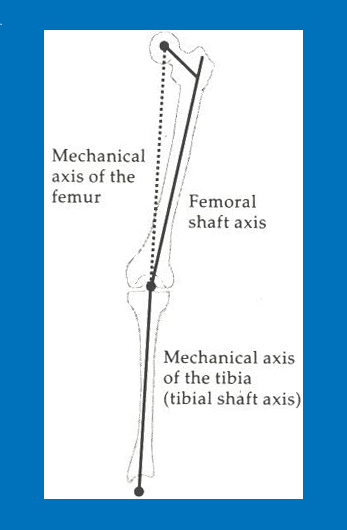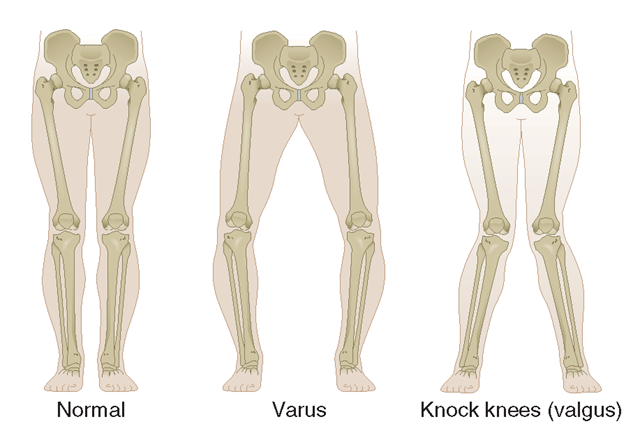Over the last 50 years surgeons have striven to give patients a "neutral mechanical axis" after total knee replacement. (Figure 1. a straight line passes through the center of the hip, knee, and ankle)
Figure 1

This, thanks to the pioneering work of knee surgeons John Insall and Chit Ranawat of New York and Michael Freeman of London among others. In the 1970s, they established this reproducible alignment goal. The problem at that time was a lack of reliable instruments to carry out the plan. Success depended on the "eye" of the experienced surgeon at academic centers. In the 1980s, David Hungerford from Baltimore developed the "universal instrument system" which allowed community surgeons to reproducibly get the desired alignment. Mechanical alignment was the norm over the next 30 years. Over the last decade, alignment concepts have evolved taking into account the fact that we all have unique lower extremity alignment (Figure 2. some of us have a neutral alignment, some bowlegged and others knock knee).
Figure 2

With each different alignment, the soft tissue that holds our knees together has unique tension or stability. The concept of kinematic or patient specific alignment has evolved over the last decade. This philosophy has a goal of restoring a patient's alignment to their pre-arthritis alignment so little or no soft tissue release is necessary. Intuitively, this makes sense. The problem was we didn't have the instruments to carry out patient specific alignment until now. With our new Velys robotically assisted surgery platform, we can evaluate a patient's unique soft tissue tension throughout their range of motion and develop a plan to reproduce the same tension by manipulating their total knee implant position. The computer portion of the platform allows us in real time to try various alignment options. Once we decide on the plan, the robot executes the plan with more accuracy than even the most experienced joint replacement surgeon. Our early results with this system have been very promising with excellent stability of our patient's knees. By continually evaluating and evolving our knee replacement techniques we hope to improve the outcomes of our patients. The introduction of digital technology into joint replacement is the dawn of a new chapter in hip and knee replacement surgery.

